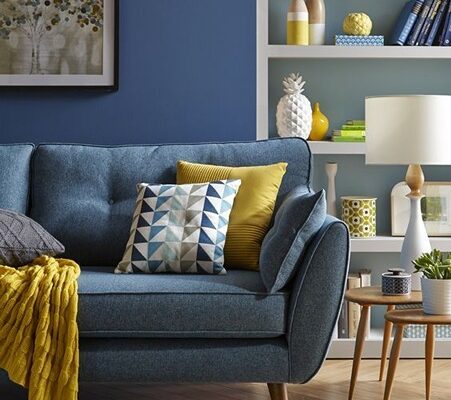Discover the Ideal Furniture for Small Space
If you have a small room, there’s no need to feel limited to using only small furniture items. When selecting furniture for small spaces, it’s best to choose pieces that are both functional and visually appealing. To achieve this, you can follow some tips that can help make your space feel more spacious.
Choosing the right furniture for small space can make a big difference in its overall functionality and appearance. One essential trick is to pick furniture items that don’t obstruct your view from one area to another. This can be done by opting for open-sided bookcases or shelving units, glass or acrylic tables, and chairs with slender profiles.
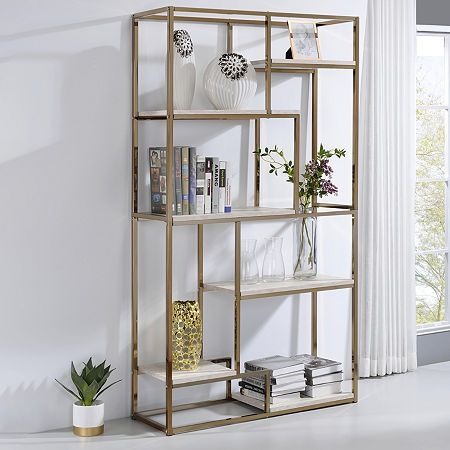
By choosing furniture with open designs, you can create a sense of flow and movement in the room while still providing essential functionality. These pieces can fill your room with comfort and utility without taking up too much floor space, thus avoiding a congested and cluttered feel in your small space.
When examining the size of your home in terms of its total square footage, it may appear spacious. However, it’s probable that you have at least one room that is smaller in size and requires extra attention when it comes to decorating it. The selection of furniture for small space and other decorative items can play a significant role in altering the appearance and atmosphere of the room.
Therefore, it’s important to take into account the size and dimensions of the room when choosing furniture and decor, as it can greatly impact the overall aesthetic and functionality of the space.
Avoiding Textured Furniture
When designing a space, it’s important to consider not only the size of the furniture but also its composition, as it can greatly impact the overall aesthetic of the room. Home design experts suggest avoiding textured furniture pieces if you want to create the illusion of a larger space.
This is because textures on furniture or fabrics can hinder the reflection of light in a small room, leading to a cramped and suffocating appearance. Victorian-style furniture, for example, is known for its heavily textured and ornate designs, which can make a small room feel even more crowded.
However, this doesn’t mean that you should completely eliminate textured or designer furnishings from your space. If you have a piece of furniture that you absolutely love, such as a couch, chair, or China cabinet, don’t hesitate to use it. By incorporating just one standout piece in a room, you can draw attention to its unique design without overwhelming the space with too many decorative elements. This can help prevent a smaller room from feeling cluttered and cramped.

Choosing Furniture That Serves Multiple Purposes
When working with limited space, it’s crucial to prioritize usability when selecting furniture and decor for a room. Every item in the space should serve a purpose, whether it’s functional, eye-catching, or both. When shopping furniture for small spaces, it’s important to choose pieces that can serve multiple purposes, to maximize the functionality of your limited square footage.
For instance, if you have an ottoman paired with a special chair, consider choosing one that also doubles as a storage space. Even the walls in a small area should be designed to do more than just display photos; they can be used to hang decorative mirrors that serve both as art and a practical place to check your appearance.
When selecting furniture, look for pieces that can serve at least two or more purposes. For example, a dresser can also double as a nightstand, or a coffee table can have storage space for blankets. A desk can also function as a dining table in a pinch. Additionally, smaller pieces like side tables or benches can be pushed together to serve as a coffee table, while still being functional as individual pieces.
By selecting furniture and decor with multiple functions, you can make the most of limited space without sacrificing style or practicality.
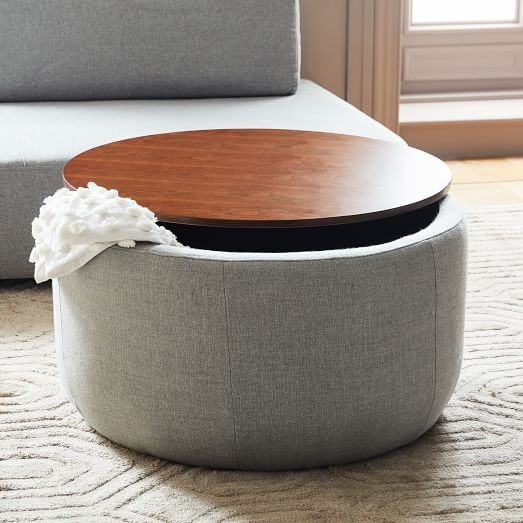
Avoiding Clutter
When dealing with a small living space, it can be tempting to try to maximize every inch by filling it with bookcases, chairs, loveseats, and other items you think you need for daily use. However, this approach often leads to clutter, which can increase stress levels. When every inch of space is occupied, your eyes have nowhere to rest, which can make a room feel chaotic and uninviting.
A restful space is one where your eyes can easily rest, allowing you to fully enjoy and relax in the room. To achieve this, it’s important to be selective about the furniture and art pieces you choose for each room, regardless of its size.
Contrary to popular belief, using several small furniture pieces in a small space doesn’t necessarily make it look bigger. In fact, too many small pieces can make a space feel even more enclosed. It’s better to opt for one or two larger pieces of furniture rather than six or seven smaller ones. This approach can create a sense of spaciousness and openness, making the room feels less cramped and more comfortable to spend time in. Remember: less is often more, especially in a small living space.
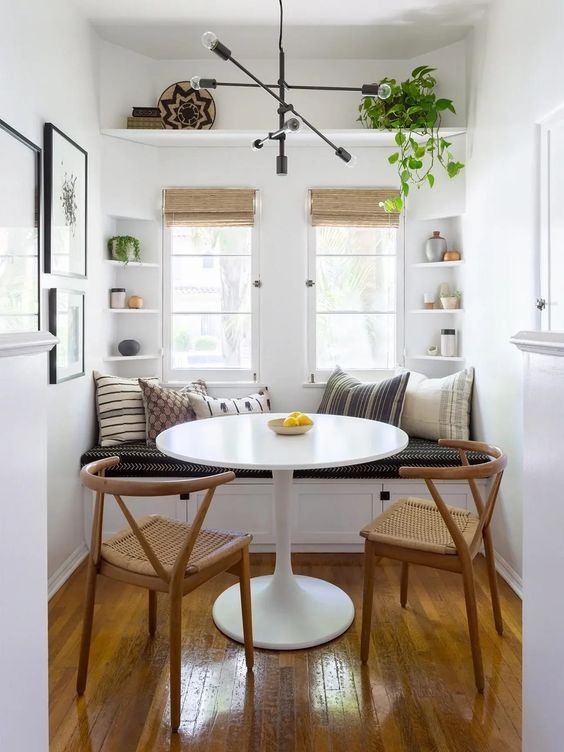
Color Consideration
When designing a small space, it’s important to consider color to create a sense of airiness and spaciousness. Even if the room doesn’t have any natural light, the appearance of light can be achieved through color choices.
The first rule is to choose light colors for the walls. Basic, neutral shades work best as they reflect light and make the room appear larger. For furniture, opt for lighter colors or tones as dark pieces can absorb light and make the space feel cramped. Pastel-toned or light wooden furniture are excellent options for creating a sense of openness.
However, color choice isn’t the only consideration when trying to make a small space feel larger. It’s essential to maintain a consistent color scheme throughout the room. Sticking to a monochromatic color scheme, whether it’s all dark or all light, will help create a sense of continuity and spaciousness.
It’s also best to avoid bold or printed wall patterns in small spaces. Save these for larger areas in your home where they won’t overwhelm the room. By keeping the color scheme simple and consistent, you can create a visually appealing and open space in even the smallest of rooms.
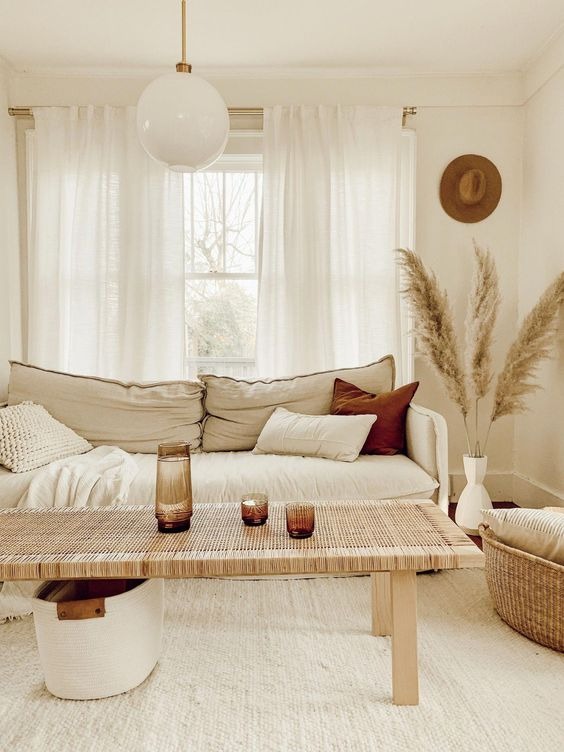
The Power of Exposed Legs
When furnishing a small space with a chair or couch, it is recommended to choose a piece that has exposed legs. This creates an open space underneath the furniture, which makes the room feel more spacious by allowing light to flow through unobstructed. Opting for skinny arms and legs on the furniture can also help to make a room feel more open and airy.

Avoid bulky and overstuffed sofa arms and chunky legs, and instead choose furniture with slender and streamlined silhouettes. By selecting furniture with these characteristics, you can create a sense of openness and a more spacious feeling in your small living area.
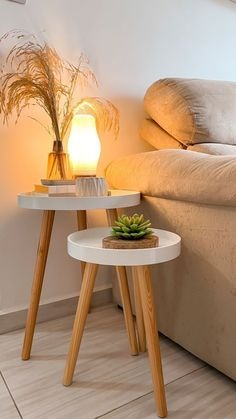
Vertical Layouts for Efficient Storage
In a smaller space, it’s crucial to maximize every inch of space available, and going vertical is an excellent way to do that. Instead of relying solely on floor space, take advantage of your walls and use them to your advantage. For instance, tall furniture pieces like a chest with drawers or a bookcase can provide additional storage while taking up minimal floor space. This allows you to make the most of the height of the room and keeps the overall footprint of your furniture small.
Additionally, you can create the illusion of more space by arranging wall art or prints in a vertical layout. This technique draws the eye upward and adds dimension to the space, making it appear larger and more open. So, when decorating a smaller space, don’t forget to look up and utilize every inch of available vertical space.
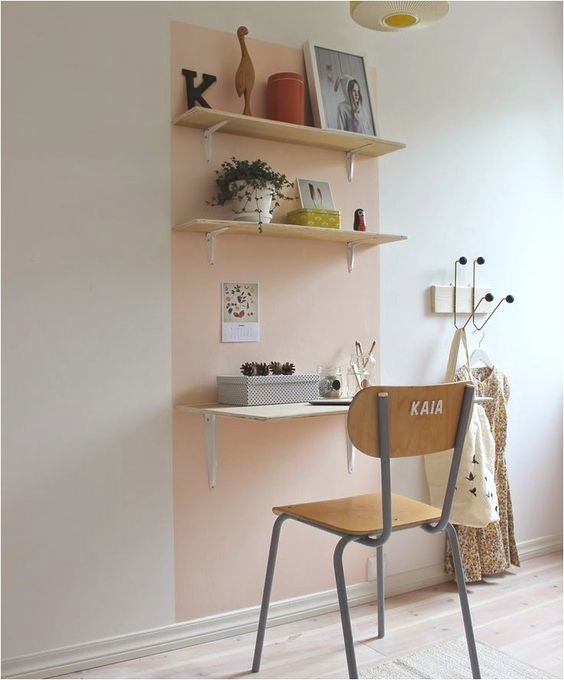
Cohesive Color Scheme
To create a cohesive and calming look in a smaller space, it’s important to consider the dominant color scheme. Using too many different colors or textures can create a cluttered and chaotic appearance. Instead, stick with a unified color palette for the space to give it a more calming and spacious feel.
To add visual interest without adding more colors, try incorporating various textures such as linen, boucle, leather, jute, or wool. These organic and tactile materials can create a pattern and add depth to the room.
With careful planning, even a small space can be stylish and functional. These tips provide a solid foundation for creating a unique and usable look that reflects your personal style.
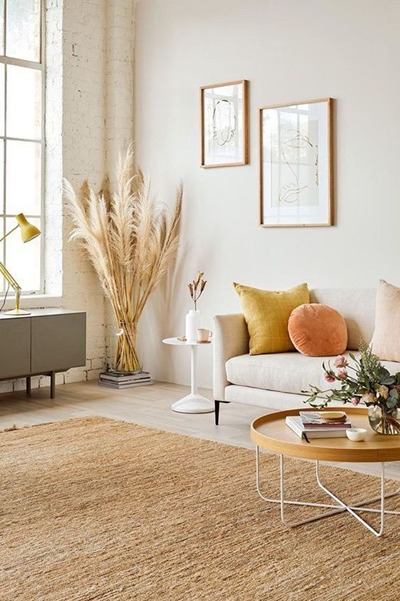
Why is furniture size important?
Furniture for small spaces requires careful consideration to ensure that it provides adequate storage and seating without overwhelming the room. When selecting furniture for small spaces, it’s important to consider the size of the space. In larger rooms, it’s recommended to choose larger furniture pieces to create a balanced and proportional look. Conversely, in smaller rooms, it’s best to opt for smaller furniture to ensure the pieces fit well and don’t overwhelm the space. This is known as scale, which refers to the visual size of furnishings in relation to each other and the room.
To create visual interest and drama in a room, it’s essential to mix items of different scales, such as big and small items, tall and short items. This will add variety to the room and create a harmonious balance between the furniture pieces.
